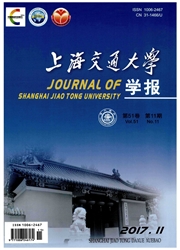

 中文摘要:
中文摘要:
针对目前大多数组合方式交通分配模型都没有考虑可靠性因素对出行行为的影响,提出了一个基于可靠性的组合方式交通分配模型.该模型考虑了组合方式出行下路网的随机波动因素,更好地反映了出行者方式、路径选择行为.基于K优路径和连续平均法,设计了模型的求解算法,并以上海北外滩实际路网为例,验证了模型的合理性和算法的有效性.与传统组合方式交通分配模型结果进行对比,分析了停车换乘措施的实施对减少交通拥堵、提高路段可靠性所起的作用,阐明了2种出行方式需求之间的比例与可靠性偏好因子和出行者需求效用因子的三维变化关系.
 英文摘要:
英文摘要:
So far most combined-modal traffic assignment models do not consider the influence of travel time reliability on travel behavior.Due to this reason this paper constructed a combined-modal traffic assignment model based on travel time reliability.This model took into consideration the stochastic factors of network in combined-modal travel behaviors,thus better depicted the model route choice behavior.The algorithm was designed based on K-shortest paths algorithm coupled with the method of successive averages.Further the application of the proposed model and the algorithm were illustrated using real network of Shanghai North Bund.The results were compared with traditional models which do not consider the impact of reliability factors.This paper analyzed the effect of PR policy on reducing traffic congestion and improving the link travel time reliability,and clarified the three-dimensional relationship among the rate of travel demand of two modes,reliability preference factor and travel demand utility factor.
 同期刊论文项目
同期刊论文项目
 同项目期刊论文
同项目期刊论文
 期刊信息
期刊信息
